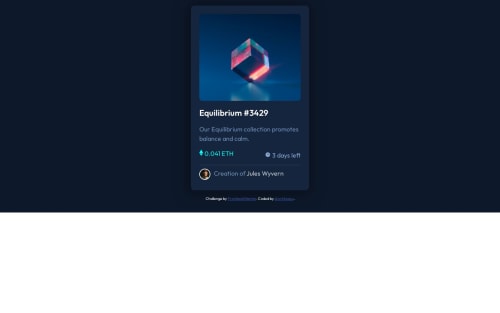NFT Preview-card Solution

Solution retrospective
Hello there, this is my solution to [NFT preview-card challenge]. Though I was able to accomplish the goals/objectives of this project, but I am unsure if I used the best coding practice. Hence, I would love the pros in the house to look through my code and make corrections if possible.
The things I observed that didn't go well with me: Therefore, these are the most pressing ones that I need immediate guidance on.
- When testing the responsiveness of my webpage, I noticed that when I choose the iphone SE and the rest of the other layouts, I couldn't see my webpage in it's entirety. Also, it didn't allow me scroll up and down. but when I switched to the responsive dimension where I expand and reduce the screen size, everything worked great.
Please can anyone tell me why this is happening? Patiently waiting for any feedback. Thankyou.
Please log in to post a comment
Log in with GitHubCommunity feedback
- P@danielmrz-dev
Hello, @Arhne!
Your project looks great!
I hava e a few suggestions for you to improve it:
-
Change your body
background-colorto#0D1A2D. Doing that, you don't need to give your maindivthe same background. -
I don't know if those classes you used are
bootstraportailwind, but they are somehow preventing your card from being placed in the middle of the page. Try that instead:
body { height: 100vh; display: flex; justify-content: center; align-items: center; }I hope it helps!
Other than those little details, you did a great job!
Marked as helpful -
Join our Discord community
Join thousands of Frontend Mentor community members taking the challenges, sharing resources, helping each other, and chatting about all things front-end!
Join our Discord